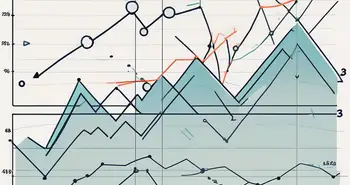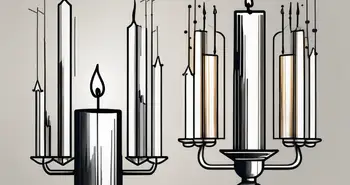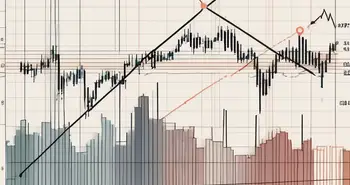The Power of Reversal Chart Patterns

As a seasoned trader and chart pattern enthusiast, I am here to share with you the invaluable insights into unlocking the power of reversal chart patterns. These patterns hold a wealth of information that can help you identify potential trend reversals and make smarter trading decisions. In this article, we will explore different types of reversal chart patterns, learn how to interpret them effectively, discuss strategies for trading with these patterns, and avoid common mistakes. So, let's dive in and discover the secrets of reversal chart patterns!
Understanding Reversal Chart Patterns
Before we delve into the intricacies of reversal chart patterns, let's first establish what exactly they are. Reversal chart patterns are technical analysis patterns that indicate a potential change in the prevailing market trend. They typically occur after a prolonged uptrend or downtrend and suggest a shift in investor sentiment. These patterns are formed by the interaction of price levels, volume, and other technical indicators.
Now, you might be wondering why these patterns are so important in trading. Well, the answer lies in their ability to provide early indications of trend reversals. By recognizing these patterns in their early stages, you can gain a significant edge in the market and increase your chances of profiting from the ensuing price movements.
Defining Reversal Chart Patterns
Reversal chart patterns can be broadly classified into two types: reversal chart patterns that indicate a potential trend reversal to the upside and those that forecast a reversal to the downside. Let's explore each type in more detail:
- Head and Shoulders Pattern: This pattern consists of three successive peaks, with the middle peak (the head) being higher than the others (the shoulders). It suggests a reversal from an uptrend to a downtrend.
- Double Top and Double Bottom Patterns: In a double top pattern, the price reaches a previous peak twice before reversing its trend. Conversely, a double bottom pattern occurs when the price hits a previous low twice before changing direction. These patterns indicate a potential reversal to the downside and upside, respectively.
- Triple Tops and Triple Bottoms: Similar to their double counterparts, triple tops and triple bottoms occur when the price hits a previous peak or low three times before reversing. These patterns provide even stronger signals of a potential trend reversal.
Now that we have covered the basic reversal chart patterns, let's dive deeper into their significance and how they can be used in trading strategies. When a head and shoulders pattern forms, it represents a battle between buyers and sellers. The first peak, or the left shoulder, is formed when buyers push the price to a high level. However, sellers step in and push the price back down, forming the first trough. The second peak, or the head, is formed when buyers regain control and push the price even higher. But once again, sellers come in and push the price down, forming the second trough. Finally, the third peak, or the right shoulder, is formed when buyers attempt to push the price higher, but fail to surpass the head. This failure indicates a weakening of the uptrend and signals a potential reversal to a downtrend.
Similarly, double top and double bottom patterns provide valuable insights into market sentiment. In a double top pattern, the first peak represents a strong resistance level. When the price fails to break above this level and falls back down, it forms the first trough. The price then makes a second attempt to break the resistance level, forming the second peak. However, once again, it fails to surpass the resistance and falls back down, forming the second trough. This failure to break the resistance level twice indicates a potential reversal to the downside.
On the other hand, double bottom patterns occur when the price finds support at a certain level. The first trough represents a strong support level, and when the price bounces back up, it forms the first peak. However, it fails to break above the resistance level and falls back down, forming the second trough. The price then makes a second attempt to break the resistance level, forming the second peak. This double bottom formation indicates a potential reversal to the upside.
Lastly, triple tops and triple bottoms provide even stronger signals of a potential trend reversal. These patterns occur when the price tests a previous peak or low three times, forming three peaks or three troughs. The significance of these patterns lies in the fact that they show multiple failed attempts to break a certain level, indicating a strong resistance or support zone. When the price fails to break above or below this zone, it suggests a potential reversal in the opposite direction.
Interpreting Reversal Chart Patterns
Recognizing the formation of reversal chart patterns is crucial, but understanding their implications is equally important. Here are some key factors to consider when interpreting these patterns:
Recognizing the Formation of Patterns
To effectively interpret reversal chart patterns, it's essential to wait for their complete formation. Jumping the gun and assuming a pattern prematurely can lead to false signals and potential losses. Be patient and let the pattern confirm itself fully before taking any action.
Analyzing the Volume and Price Action
Volume and price action play a significant role in interpreting reversal chart patterns. Increasing volume during the formation of a pattern validates its validity and suggests a higher probability of a trend reversal. Likewise, observing price action and identifying key support and resistance levels can provide additional confirmation.
Personally, I found that combining these technical indicators with a robust risk management strategy has been crucial in my trading success. By waiting for confirmation, analyzing volume, and considering price action, I have significantly improved my ability to interpret reversal chart patterns and make informed trading decisions.
Strategies for Trading Reversal Chart Patterns
Now that we have a solid understanding of reversal chart patterns and how to interpret them, let's discuss some effective strategies for trading with these patterns:
Timing Your Entry and Exit
Timing is everything in trading, and reversal chart patterns are no exception. To optimize your trading performance, wait for a confirmed breakout or breakdown of the pattern before entering a position. This helps to avoid false signals and provides a higher probability of success. Additionally, consider setting profit targets and using trailing stop-loss orders to maximize your gains and minimize potential losses.
Managing Risk with Stop Loss Orders
As any seasoned trader knows, risk management is crucial for long-term success. When trading reversal chart patterns, it's important to utilize stop-loss orders to limit your potential losses if the market moves against your position. Placing stop-loss orders below support or above resistance levels can help protect your capital while still allowing for potential upside.
Common Mistakes to Avoid When Using Reversal Chart Patterns
While reversal chart patterns can be incredibly powerful tools, they are not foolproof. Here are some common mistakes to avoid when using these patterns:
Over-reliance on Patterns
Just because a reversal chart pattern has formed does not guarantee an immediate trend reversal. It's essential to consider other factors, such as market conditions, fundamental analysis, and overall market sentiment. Over-reliance on patterns without considering the broader context can lead to poor trading decisions.
Ignoring the Larger Market Trend
A reversal chart pattern is most effective when it aligns with the larger market trend. Ignoring the prevailing trend can be detrimental to your trading performance. Always remember to analyze the bigger picture and consider the overall market direction before placing trades based on reversal chart patterns.
FAQ:
Q: What are reversal chart patterns?
A: Reversal chart patterns are technical analysis patterns that indicate a potential change in the prevailing market trend. They occur after a prolonged uptrend or downtrend and suggest a shift in investor sentiment.
Q: Why are reversal chart patterns important in trading?
A: Reversal chart patterns provide early indications of trend reversals. By recognizing these patterns, traders can gain an edge in the market and increase their chances of profiting from the ensuing price movements.
Q: How do you interpret reversal chart patterns?
A: To interpret reversal chart patterns effectively, it's important to wait for their complete formation, consider volume and price action, and analyze key support and resistance levels. These factors help to confirm the validity of the pattern and provide insights into potential trend reversals.
Q: What strategies can I use for trading reversal chart patterns?
A: Two strategies for trading reversal chart patterns include timing your entry and exit by waiting for confirmed breakouts or breakdowns, and managing risk with stop-loss orders to limit potential losses.
Q: What are common mistakes to avoid when using reversal chart patterns?
A: Two common mistakes to avoid are over-relying solely on patterns without considering other factors, and ignoring the larger market trend when analyzing reversal chart patterns.
I hope this article has shed some light on the power of reversal chart patterns for you. Remember, practice makes perfect, so take the time to familiarize yourself with these patterns and integrate them into your trading strategy. Happy trading!
Ready to put your knowledge of reversal chart patterns into action? Look no further than Morpher, the revolutionary trading platform that empowers you to trade with zero fees, infinite liquidity, and the flexibility of fractional investing. Whether you're looking to capitalize on market downturns through short selling or amplify your trades with up to 10x leverage, Morpher offers a unique trading experience tailored to your needs. Experience the future of investing on a platform that prioritizes safety, control, and innovation. Sign Up and Get Your Free Sign Up Bonus today, and start trading the smart way with Morpher.

Disclaimer: All investments involve risk, and the past performance of a security, industry, sector, market, financial product, trading strategy, or individual’s trading does not guarantee future results or returns. Investors are fully responsible for any investment decisions they make. Such decisions should be based solely on an evaluation of their financial circumstances, investment objectives, risk tolerance, and liquidity needs. This post does not constitute investment advice.

Painless trading for everyone
Hundreds of markets all in one place - Apple, Bitcoin, Gold, Watches, NFTs, Sneakers and so much more.

Painless trading for everyone
Hundreds of markets all in one place - Apple, Bitcoin, Gold, Watches, NFTs, Sneakers and so much more.









